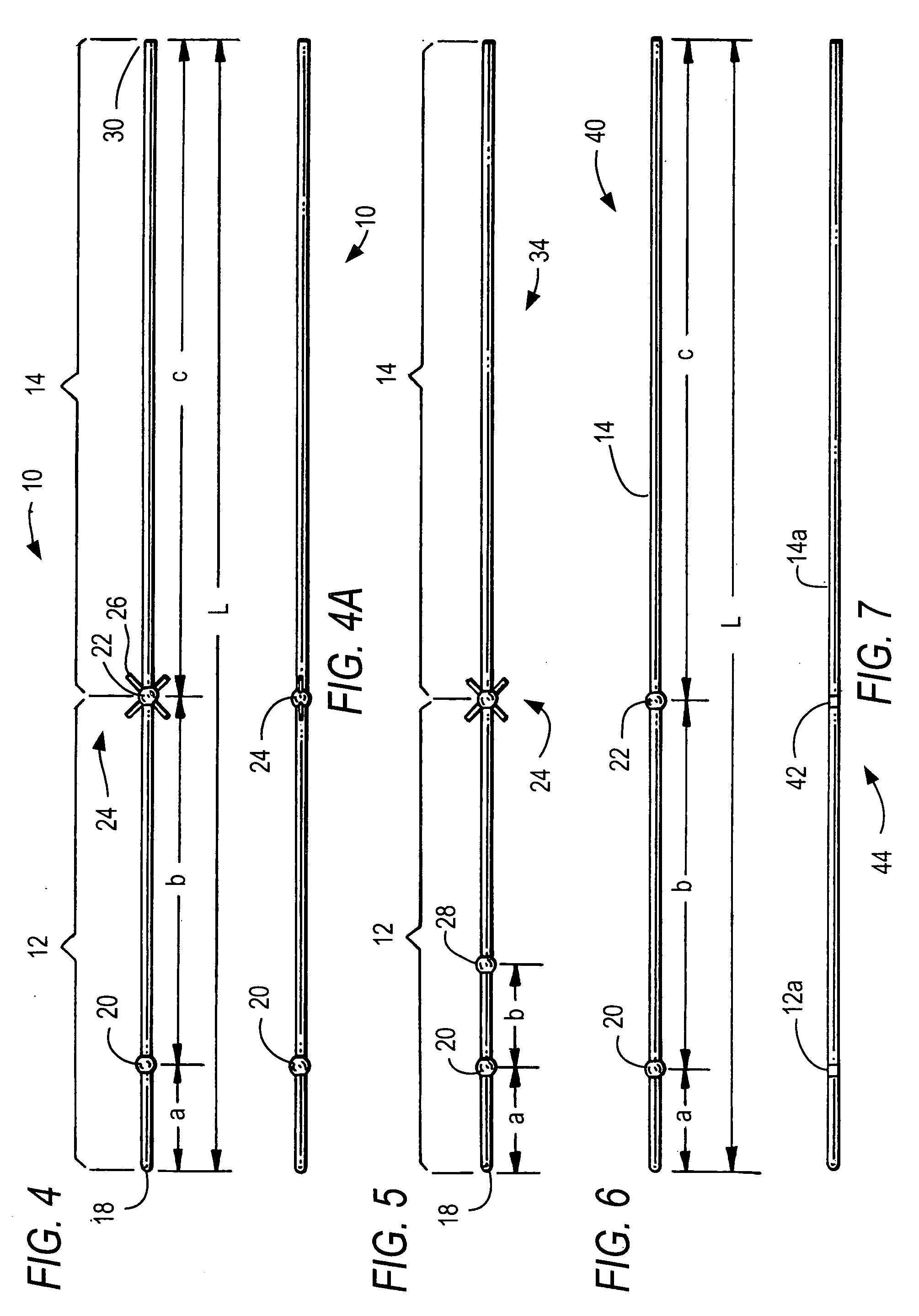Guide pin for pedicle screw placement and method for use of such guide pin in spinal fusion surgeries
a technology of pedicle screw and guide pin, which is applied in the field of spinal fusion surgery, can solve the problems of affecting the accuracy of pedicle screw placement, the difficulty of obtaining the correct starting and aiming points using the current available techniques, and the potential for permanent neurologic deficit of the use of the pedicle screw in the spin
- Summary
- Abstract
- Description
- Claims
- Application Information
AI Technical Summary
Benefits of technology
Problems solved by technology
Method used
Image
Examples
Embodiment Construction
[0062]The features of the invention will become apparent from the following description of the exemplary embodiments taken in conjunction with the accompanying drawings. For convenience and clarity in describing these embodiments similar elements or components appearing in different figures will have the same reference numbers.
[0063]For purposes of this application, the word radiograph will be understood to mean not only conventional x-ray imaging seen as electronic projections and / or film, but also all forms of internal imaging of otherwise opaque items, including but not limited to electromagnetic radiation, x-ray, fluoroscopy, CT scan, MRI and ultrasound.
[0064]FIGS. 1-3 are prior art illustrations showing fragmentary views of a human spine, which establish a background disclosure of the location of pedicles on a typical vertebra for understanding the present invention.
[0065]FIG. 1 is a fragmentary side elevation view of a human spine 1, including five typical lumbar vertebrae 2.
[...
PUM
 Login to View More
Login to View More Abstract
Description
Claims
Application Information
 Login to View More
Login to View More - R&D
- Intellectual Property
- Life Sciences
- Materials
- Tech Scout
- Unparalleled Data Quality
- Higher Quality Content
- 60% Fewer Hallucinations
Browse by: Latest US Patents, China's latest patents, Technical Efficacy Thesaurus, Application Domain, Technology Topic, Popular Technical Reports.
© 2025 PatSnap. All rights reserved.Legal|Privacy policy|Modern Slavery Act Transparency Statement|Sitemap|About US| Contact US: help@patsnap.com



